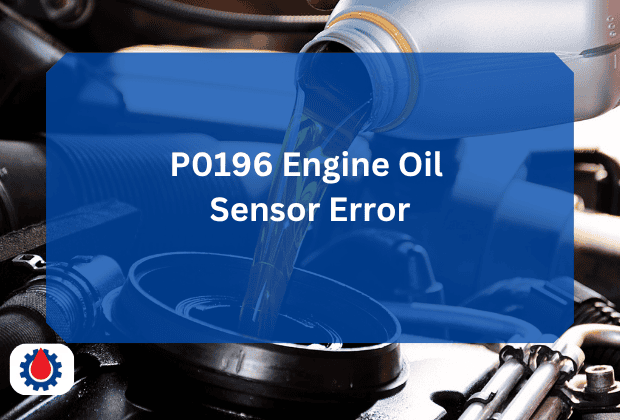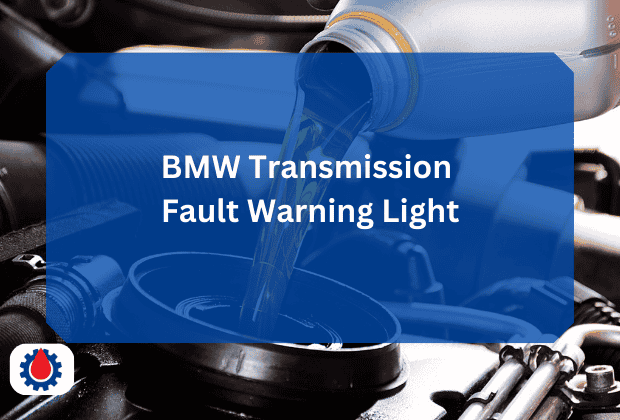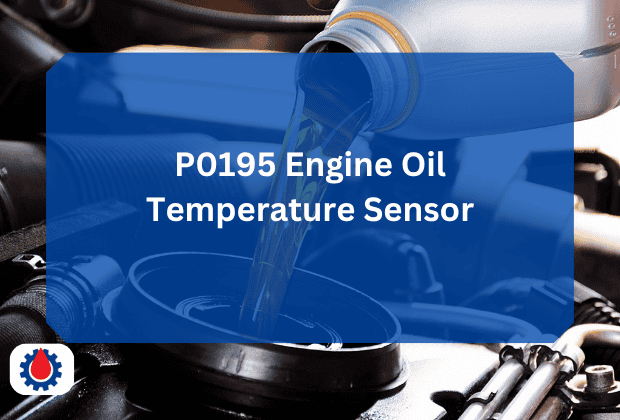In this post, we’ll dive into the details of the P0196 error code, offering practical insights for drivers and DIY mechanics alike.
P0196 Engine Oil Sensor Error
The P0196 engine oil sensor error is a diagnostic trouble code (DTC) that indicates an issue with the engine oil temperature sensor or its circuit, specifically a “range/performance problem.”
The P0196 code is part of the On-Board Diagnostics II (OBD-II) system, which monitors various vehicle systems to ensure optimal performance. Specifically, P0196 points to a problem with the engine oil temperature (EOT) sensor, which measures the temperature of the engine oil.
The Engine Control Module (ECM) uses this data to adjust engine performance, ensuring proper lubrication and preventing overheating. When the ECM detects that the EOT sensor’s signal is out of the expected range or performing inconsistently, it triggers the P0196 code.
This error is typically seen in diesel engines, such as those found in Ford Powerstroke, Dodge Cummins, or GM Duramax vehicles, but it can occur in any vehicle equipped with an EOT sensor. While not immediately catastrophic, ignoring this code can lead to engine performance issues or long-term damage if left unaddressed.
Symptoms of a P0196 Error Code
Recognizing the symptoms of a P0196 error can help you address the issue before it escalates. Common signs include:
- Check Engine Light (CEL): The most obvious indicator is the illumination of the check engine light on your dashboard.
- Inaccurate Oil Temperature Readings: You may notice erratic or incorrect oil temperature readings on your vehicle’s gauge or diagnostic tool.
- Poor Engine Performance: The engine may experience reduced power, sluggish acceleration, or rough idling due to improper ECM adjustments based on faulty sensor data.
- Decreased Fuel Efficiency: Incorrect oil temperature readings can lead to suboptimal fuel combustion, reducing fuel economy.
- Overheating or Cooling Issues: In some cases, the engine may run hotter or cooler than normal, potentially causing wear on internal components.
If you experience these symptoms, it’s wise to scan your vehicle with an OBD-II scanner to confirm the P0196 code and rule out other issues.
Related P0195 Engine Oil Temperature Sensor(6 Causes + Solutions)
Common Causes of the P0196 Error
Several factors can trigger a P0196 code. Identifying the root cause is critical for effective repairs. Common culprits include:
- Faulty Engine Oil Temperature Sensor: The EOT sensor itself may be defective, sending incorrect or erratic signals to the ECM.
- Wiring or Connector Issues: Damaged wiring, loose connections, or corroded terminals in the EOT sensor circuit can disrupt signal transmission.
- Low or Contaminated Engine Oil: Low oil levels or contaminated oil (e.g., with coolant or fuel) can affect the sensor’s ability to measure temperature accurately.
- ECM Software Issues: In rare cases, outdated or corrupted ECM software may misinterpret sensor data, triggering the code.
- Environmental Factors: Extreme temperatures or exposure to moisture can affect the sensor’s performance, especially in older vehicles.
Related Engine Oil Temperature Chart(Complete Guide)
Diagnosing the P0196 Error
Proper diagnosis is key to resolving the P0196 code efficiently. Here’s a step-by-step guide to diagnosing the issue:
- Scan for Codes: Use an OBD-II scanner to confirm the P0196 code and check for related codes (e.g., P0197 or P0198, which indicate low or high voltage in the EOT sensor circuit).
- Inspect the EOT Sensor and Wiring: Visually check the sensor and its wiring harness for signs of damage, corrosion, or loose connections. The EOT sensor is typically located near the oil filter housing or on the engine block.
- Test the Sensor: Use a multimeter to measure the sensor’s resistance and compare it to the manufacturer’s specifications. A faulty sensor will often show inconsistent or out-of-range readings.
- Check Engine Oil Condition: Verify that the engine oil level is adequate and free of contamination. Dirty or low oil can affect sensor performance.
- Test the ECM: If the sensor and wiring appear fine, consider consulting a professional to check the ECM for software issues or faults.
Related Engine Oil Temperature Sensor(10 Facts You Need To Know)
Fixing the P0196 Error
Once you’ve identified the cause, you can proceed with repairs. Here are common solutions based on the diagnosis:
- Replace the EOT Sensor: If the sensor is faulty, replacing it is often the most straightforward fix. Ensure you use an OEM or high-quality aftermarket sensor compatible with your vehicle.
- Repair Wiring or Connectors: Fix any damaged wires or connectors in the EOT sensor circuit. Use an electrical cleaner to remove corrosion and ensure secure connections.
- Change the Engine Oil: If the oil is low or contaminated, perform an oil change using the manufacturer-recommended oil type and viscosity.
- Update ECM Software: In rare cases, updating or reflashing the ECM software may resolve the issue. This typically requires professional tools and expertise.
- Clear the Code: After repairs, use an OBD-II scanner to clear the P0196 code and monitor the vehicle to ensure the issue doesn’t return.
Related Normal Oil Pressure for Diesel Engines(Norma Pressure Range)
Preventing Future P0196 Errors
Preventive maintenance can help avoid recurring P0196 issues. Follow these tips:
- Regular Oil Changes: Stick to your vehicle’s recommended oil change intervals to keep the oil clean and at proper levels.
- Inspect Wiring Periodically: Check the EOT sensor and its wiring for wear, especially in harsh climates or after off-road driving.
- Use Quality Parts: Opt for OEM or reputable aftermarket sensors to ensure reliability and compatibility.
- Monitor Engine Performance: Pay attention to changes in engine behavior or dashboard warnings, and address them promptly.
When to Seek Professional Help
While many P0196 issues can be resolved with basic tools and mechanical knowledge, some cases require professional intervention. If you’re unable to diagnose the issue, lack the tools to test the ECM, or suspect complex electrical problems, consult a certified mechanic or dealership. They can perform advanced diagnostics and ensure repairs are done correctly.
Related Low Engine Oil Pressure(8 Common Causes & Solutions)
FAQs
How do I fix code P0196?
To fix the P0196 code, follow these steps:
- Inspect the engine oil – Make sure it’s clean and filled to the correct level.
- Check the oil temperature sensor – Test it for proper resistance using a multimeter. Replace it if it’s out of spec.
- Examine the wiring and connectors – Look for signs of damage, corrosion, or loose connections. Repair or replace as needed.
- Clear the code – Use an OBD-II scanner to reset the code after repairs, then test drive to ensure it doesn’t return.
If these steps don’t work, deeper diagnostics may be needed, possibly involving the ECM.
What happens if your oil temperature sensor goes bad?
A bad oil temperature sensor can send incorrect signals to the engine control module, resulting in:
- Poor fuel economy
- Rough idling or hard starting
- Inaccurate oil temperature gauge readings
- Engine running too rich or lean
- Illuminated check engine light
Over time, this can lead to increased engine wear or even failure if not addressed.
Related Engine Oil Pressure Control Circuit Stuck On(6 Causes + Solutions)
Where is the oil temperature sensor located?
The oil temperature sensor is typically located:
- Near the oil filter housing
- On the engine block or oil pan, depending on the engine design
- Sometimes integrated with the oil pressure sensor in some vehicle models
Refer to your vehicle’s service manual or a repair guide for the exact location.
How do you reset an engine oil sensor?
To reset an engine oil temperature sensor or clear the code:
- Fix the root cause – Ensure the faulty sensor or wiring has been repaired or replaced.
- Use an OBD-II scanner – Plug it into the diagnostic port and select “Clear DTCs” or “Erase Codes.”
- Disconnect the battery (optional) – If no scanner is available, disconnect the battery for 10–15 minutes to attempt a manual reset.
Keep in mind that clearing the code without fixing the cause will likely result in the error returning.
How to fix a faulty engine sensor?
Fixing a faulty engine sensor typically involves:
- Testing the sensor – Use a digital multimeter to check voltage, resistance, and continuity.
- Cleaning the sensor connector – Remove dirt or corrosion that might interfere with signal transmission.
- Replacing the sensor – If it’s defective, replace it with an OEM or high-quality aftermarket part.
- Repairing wiring – Check the sensor’s circuit for any damage and repair or replace as needed.
Final words
The P0196 engine oil sensor error is a manageable issue when addressed promptly. By understanding its symptoms, causes, and solutions, you can restore your vehicle’s performance and prevent further complications. Regular maintenance, timely diagnostics, and quality repairs are key to keeping your engine running smoothly. If you encounter a P0196 code, don’t panic, follow the steps outlined above, and you’ll be back on the road in no time.




